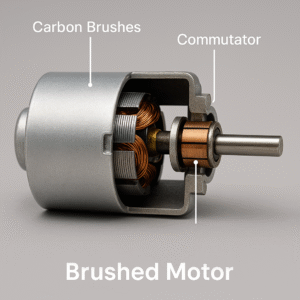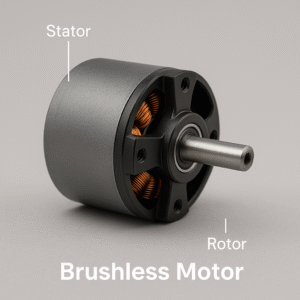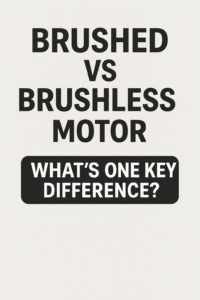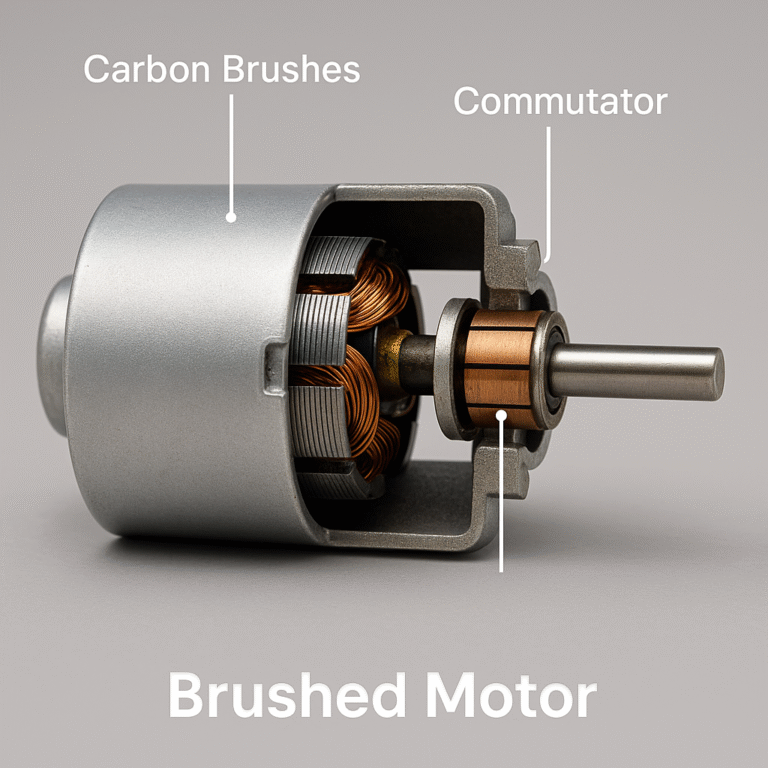If you’ve ever used a power tool, flown a drone, or worked on a DIY project 🛠️, chances are you’ve come across two main types of motors: brushed motors and brushless motors.
But what’s the actual difference between them? 🤔

🔌 Brushed Motor:
These are the OG motors. They use carbon brushes that rub against a commutator, physically switching the current direction as the motor spins.
 ⚡ Brushless Motor:
⚡ Brushless Motor:
As the name suggests, there are no brushes! Instead, they use a smart electronic controller to do the switching digitally. This means less friction, less wear, and better efficiency.

❓ Brushless Motor vs Brushed Motor – Which One is Best?
If performance, efficiency, and long-term durability matter to you, then brushless motors are the better choice ✅. They offer higher speed control, generate less heat, are quieter 🧏, and require little to no maintenance 🛠️. Although they cost more upfront 💰, they make up for it in reliability and lifespan.
However, brushed motors still have their place — especially if you’re working on a budget-friendly or simple project. They’re easy to use, cheaper 💵, and great for basic applications like toys, beginner electronics, or short-term use tools.
👉 In short:
- Choose brushless for performance, efficiency, and longevity 🔋🚀
- Choose brushed for low-cost, simple setups 🔧💸
The “best” motor really depends on your project’s needs — but in most modern applications, brushless is the future 🔮.
🔄 Difference Between Brushless Motor and Brushed Motor
| Feature | 🧰 Brushed Motor | ⚡ Brushless Motor |
| Internal Design | Uses brushes and a commutator | No brushes; uses electronic controller |
| Efficiency | Lower (friction from brushes) | Higher (less energy loss) |
| Maintenance | Requires regular brush replacement 🧹 | Minimal maintenance needed 🛠️ |
| Durability | Wears out faster ⏳ | Lasts longer 🔋 |
| Noise Level | Noisy due to brush contact 🔊 | Quiet operation 🤫 |
| Cost | Cheaper upfront 💸 | More expensive initially 💰 |
| Speed Control | Basic or manual control only ⚙️ | Precise digital control 🎛️ |
| Heat Generation | Generates more heat 🔥 | Stays cooler under load ❄️ |
| Application | Toys, low-end tools, simple electronics 🧸 | Drones, e-bikes, high-performance devices 🚀 |
✅ Summary:
- Brushed Motors = Cheaper, simpler, good for basic tasks.
- Brushless Motors = More advanced, powerful, and efficient — ideal for modern applications.



